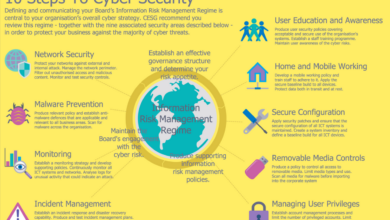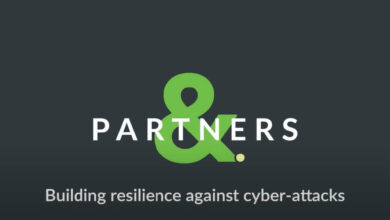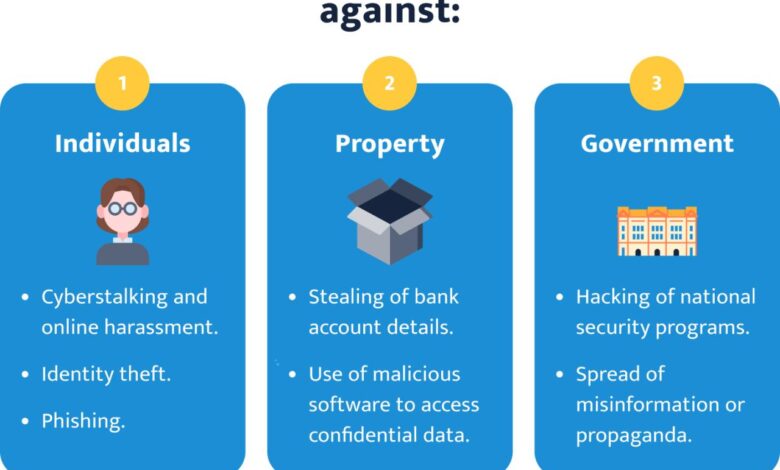
Cybersecurity Research Topics for Beginners Exploring Fundamentals
Cybersecurity research topics for beginners exploring the fundamentals – Cybersecurity research topics for beginners exploring the fundamentals – that’s what we’re diving into today! Ever wondered how the internet stays safe (or, more accurately,
-relatively* safe)? This journey into the world of cybersecurity will unpack the core concepts, from the simple (like strong passwords!) to the more complex (like cryptography and network security). We’ll explore real-world examples, common threats, and even touch upon ethical hacking – all without getting bogged down in overly technical jargon.
Get ready to become a more informed and secure digital citizen!
We’ll cover essential topics like the CIA triad (confidentiality, integrity, and availability), common attack vectors (think phishing and denial-of-service attacks), and the crucial role of cryptography in protecting sensitive data. We’ll also delve into securing operating systems, web applications, and even discuss the sneaky world of social engineering. By the end, you’ll have a solid foundation in cybersecurity, empowering you to navigate the digital landscape with greater confidence and awareness.
Introduction to Cybersecurity Fundamentals
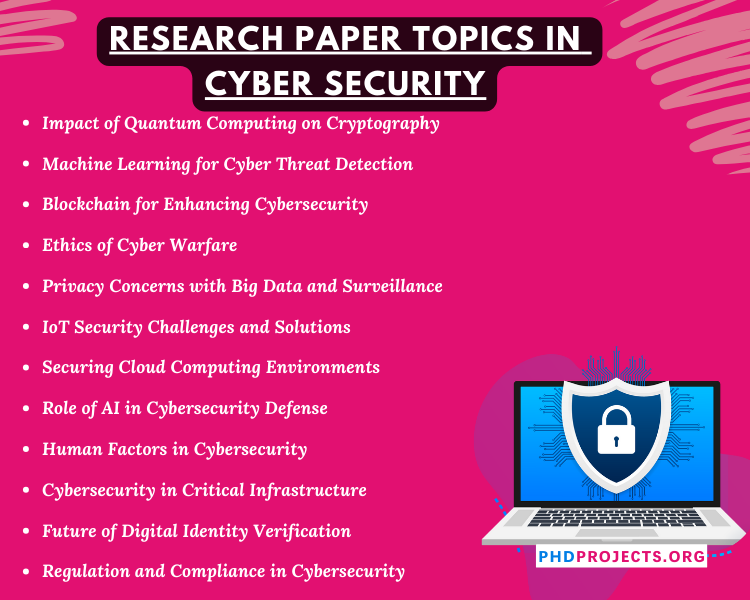
Cybersecurity is a critical aspect of our increasingly digital world, protecting our data, systems, and ourselves from various threats. Understanding the fundamentals is the first step towards building a secure digital life, whether you’re a casual internet user or aspiring cybersecurity professional. This introduction will cover the core concepts and provide a glimpse into the ever-evolving landscape of online security.
The CIA Triad: Confidentiality, Integrity, and Availability
The CIA triad forms the cornerstone of cybersecurity. These three principles represent the essential goals of any security system. Confidentiality ensures that only authorized individuals can access sensitive information. Integrity guarantees the accuracy and completeness of data, preventing unauthorized modification or deletion. Availability ensures that authorized users have timely and reliable access to information and resources when needed.
These principles are interconnected; a breach in one can compromise the others. For example, a successful denial-of-service attack (compromising availability) might be used as a distraction while attackers steal data (compromising confidentiality).
Common Cybersecurity Threats and Vulnerabilities
Cybersecurity threats encompass a wide range of malicious activities aimed at compromising systems and data. These threats exploit vulnerabilities – weaknesses in systems, applications, or processes. Some common threats include malware (viruses, ransomware, spyware), phishing attacks (deceptive emails or messages), SQL injection (exploiting vulnerabilities in database applications), denial-of-service attacks (overwhelming a system with traffic), and man-in-the-middle attacks (intercepting communication between two parties).
Vulnerabilities can stem from poor software design, outdated systems, weak passwords, or human error.
Real-World Cybersecurity Incidents and Their Impact
Numerous real-world incidents highlight the devastating consequences of cybersecurity breaches. The 2017 Equifax data breach, for instance, exposed the personal information of nearly 150 million people, resulting in significant financial losses and reputational damage for the company. The NotPetya ransomware attack in 2017 caused billions of dollars in damage globally by crippling critical infrastructure and businesses. These incidents demonstrate the far-reaching impact of cybersecurity failures, affecting individuals, organizations, and even national security.
So you’re diving into cybersecurity research for beginners? Focusing on fundamentals is key! A solid understanding of application development helps, and learning about the different approaches like those discussed in this great article on domino app dev the low code and pro code future can give you a valuable perspective on vulnerabilities. Understanding app development processes, whether low-code or pro-code, directly impacts your ability to analyze potential security weaknesses.
This broadens your cybersecurity research scope considerably.
The consequences can include financial losses, legal repercussions, reputational damage, and disruption of services.
Network Security Basics
Understanding network security is crucial in today’s interconnected world. This section explores fundamental concepts, common attacks, and essential security measures to protect your network infrastructure. We’ll delve into various network security protocols and tools, providing a foundational understanding for further exploration.
Types of Network Attacks
Network attacks can significantly disrupt operations and compromise sensitive data. Understanding these attacks is the first step towards effective defense. Common examples include denial-of-service (DoS) attacks, which flood a network with traffic to make it unavailable to legitimate users, and distributed denial-of-service (DDoS) attacks, which amplify the impact by using multiple compromised systems. Man-in-the-middle (MITM) attacks involve an attacker intercepting communication between two parties, potentially stealing data or manipulating the communication.
Other attacks include SQL injection, which targets database systems, and phishing, which uses deceptive tactics to obtain sensitive information.
Simple Network Diagram with Basic Security Measures
Imagine a simple network consisting of several computers connected to a router, which in turn connects to the internet. A firewall sits between the router and the internal network, acting as a gatekeeper, filtering incoming and outgoing traffic based on predefined rules. An intrusion detection system (IDS) monitors network traffic for suspicious activity, alerting administrators to potential threats.
The computers themselves should have robust antivirus and anti-malware software installed. This arrangement provides a basic level of protection. The diagram would show the internet, the firewall, the router, the IDS, and several computers, all interconnected with arrows indicating the flow of traffic. The firewall and IDS would be visually distinct to emphasize their protective roles.
Comparison of Network Security Protocols
TCP/IP and UDP are two fundamental protocols in network communication. TCP (Transmission Control Protocol) is a connection-oriented protocol, meaning it establishes a connection before transmitting data, ensuring reliable delivery. This makes it suitable for applications requiring guaranteed delivery, such as email or file transfer. UDP (User Datagram Protocol), on the other hand, is connectionless, prioritizing speed over reliability.
This makes it suitable for applications like streaming video or online gaming, where occasional data loss is acceptable. The key difference lies in their approach to data delivery: TCP guarantees delivery while UDP prioritizes speed.
Common Network Security Tools and Their Functionalities
| Tool | Functionality | Type | Example |
|---|---|---|---|
| Firewall | Controls network traffic based on predefined rules | Hardware/Software | iptables, Windows Firewall |
| Intrusion Detection System (IDS) | Monitors network traffic for malicious activity | Software | Snort, Suricata |
| Antivirus Software | Detects and removes malware from computers | Software | Norton, McAfee, Bitdefender |
| Virtual Private Network (VPN) | Creates a secure connection over a public network | Software/Hardware | OpenVPN, NordVPN |
Understanding Cryptography: Cybersecurity Research Topics For Beginners Exploring The Fundamentals
Cryptography is the cornerstone of cybersecurity, providing the essential tools for securing data in transit and at rest. It involves transforming readable data (plaintext) into an unreadable format (ciphertext) using mathematical algorithms, making it inaccessible to unauthorized individuals. Understanding the fundamental principles of cryptography is crucial for anyone serious about cybersecurity.
Symmetric Encryption
Symmetric encryption uses the same secret key to both encrypt and decrypt data. This means both the sender and receiver must possess the identical key. The strength of symmetric encryption relies heavily on the secrecy and length of this key. Examples of symmetric encryption algorithms include AES (Advanced Encryption Standard), widely considered a robust and secure algorithm used for protecting sensitive data, and DES (Data Encryption Standard), an older algorithm now considered insecure due to its relatively short key length.
AES is commonly used to encrypt data at rest on hard drives, while DES is largely obsolete. The simplicity of symmetric encryption makes it efficient, but secure key exchange presents a significant challenge.
Asymmetric Encryption
Asymmetric encryption, also known as public-key cryptography, employs two separate keys: a public key for encryption and a private key for decryption. The public key can be widely distributed, while the private key must be kept secret. This eliminates the need for secure key exchange inherent in symmetric encryption. RSA (Rivest-Shamir-Adleman) is a widely used asymmetric encryption algorithm, frequently employed for secure communication and digital signatures.
Elliptic Curve Cryptography (ECC) is another important asymmetric algorithm, offering comparable security with shorter key lengths, making it suitable for resource-constrained environments like mobile devices. RSA is used in securing online transactions, while ECC is increasingly used in mobile security applications.
Key Management in Cryptography
Secure key management is paramount to the effectiveness of any cryptographic system. Compromised keys render the entire system vulnerable. Key management practices include key generation, storage, distribution, use, revocation, and destruction. Robust key management strategies typically involve hierarchical key systems, hardware security modules (HSMs), and secure key lifecycle management processes. Failure to properly manage keys can lead to data breaches and significant security vulnerabilities.
For example, a poorly managed key for a database could allow unauthorized access to sensitive customer information.
Hashing Algorithms and Data Integrity
Hashing algorithms produce a fixed-size string of characters (a hash) from an input data of any size. These hashes are one-way functions; it’s computationally infeasible to reverse the process and obtain the original data from the hash. Hashing is crucial for ensuring data integrity. By comparing the hash of a data file before and after transmission or storage, one can detect any unauthorized modifications.
SHA-256 (Secure Hash Algorithm 256-bit) and MD5 (Message Digest Algorithm 5) are common hashing algorithms. However, MD5 is now considered cryptographically broken and should not be used for security-sensitive applications, while SHA-256 remains a widely used and secure option. For instance, software distribution often employs hashing to verify the integrity of downloaded files, ensuring they haven’t been tampered with during download.
A mismatch between the expected and calculated hash indicates data corruption or malicious alteration.
Operating System Security
Operating systems are the foundation of our digital lives, controlling everything from our files and applications to our network connections. A compromised operating system leaves your entire digital ecosystem vulnerable. Understanding and implementing strong OS security practices is therefore crucial for protecting your data and privacy. This section explores common vulnerabilities and provides practical steps to enhance your OS security.
Common Operating System Vulnerabilities and Mitigation Strategies
Operating systems, despite constant updates, remain susceptible to various vulnerabilities. These range from outdated software and weak configurations to malware infections and exploitation of known security flaws. Effective mitigation involves a multi-layered approach combining software updates, robust security settings, and vigilant user behavior. For example, failure to update to the latest operating system patches can leave systems exposed to known exploits.
Similarly, running software with known vulnerabilities increases the risk of compromise. Mitigation involves regularly updating all software, including the OS itself, and promptly addressing security alerts. Employing a strong firewall and antivirus software further strengthens the system’s defenses against malicious attacks.
User Access Controls and Permissions
User access controls are fundamental to operating system security. They dictate which users have access to specific files, folders, and system resources. By limiting access based on the principle of least privilege – granting only the necessary permissions to each user – we significantly reduce the potential damage from a compromised account. For instance, a standard user account should not have administrative privileges unless absolutely required for specific tasks.
Robust access control lists (ACLs) further refine permission management, allowing granular control over resource access. Improperly configured permissions can lead to unauthorized access and data breaches.
Securing User Accounts and Passwords
Strong passwords are the first line of defense against unauthorized access. This includes using complex, unique passwords for each account, avoiding easily guessable information, and regularly changing passwords. Password managers can assist in generating and securely storing complex passwords. Furthermore, enabling multi-factor authentication (MFA) adds an extra layer of security, requiring multiple forms of verification before granting access.
MFA significantly reduces the risk of account compromise, even if a password is stolen. Weak or reused passwords represent a major vulnerability.
So you’re diving into cybersecurity research? Great! Starting with the fundamentals is key, and understanding cloud security is crucial. A fascinating area to explore is the evolution of Cloud Security Posture Management (CSPM), like what’s discussed in this insightful article on bitglass and the rise of cloud security posture management , which can help you understand the practical applications of your research.
From there, you can branch out into more specific areas within the vast field of cybersecurity.
Steps for Securing a Personal Computer’s Operating System
Securing a personal computer’s operating system involves a combination of proactive measures and ongoing maintenance.
- Install and maintain up-to-date antivirus software: Regularly scan for malware and ensure automatic updates are enabled.
- Enable automatic operating system updates: This ensures the system is protected against newly discovered vulnerabilities.
- Use a strong, unique password for your user account: Avoid using easily guessable information.
- Enable firewall protection: This prevents unauthorized network access.
- Regularly back up your important data: This protects against data loss in case of a system failure or attack.
- Enable automatic software updates for all applications: Keeping software up-to-date is crucial for patching security flaws.
- Be cautious when opening email attachments and clicking links: Avoid suspicious emails and websites.
- Install and use a reputable anti-malware program: This provides an additional layer of protection against threats.
- Regularly review and update user permissions and access controls: Ensure only necessary access is granted.
- Consider using a password manager: This helps create and manage strong, unique passwords.
Web Application Security
Web applications have become integral to modern life, handling sensitive data and providing crucial services. However, their accessibility also makes them prime targets for cyberattacks. Understanding web application security is crucial for developers and users alike to protect against vulnerabilities and ensure data integrity. This section explores common vulnerabilities and secure coding practices.
Common Web Application Vulnerabilities
SQL injection and Cross-Site Scripting (XSS) are two prevalent attack vectors that exploit weaknesses in how web applications handle user input. SQL injection allows attackers to manipulate database queries, potentially gaining unauthorized access to data or modifying it. XSS attacks involve injecting malicious scripts into web pages viewed by other users, allowing attackers to steal cookies, redirect users to malicious sites, or deface websites.
These vulnerabilities highlight the critical need for robust input validation and sanitization.
Input Validation and Sanitization
Input validation and sanitization are fundamental security measures. Input validation checks if user-supplied data conforms to expected formats and constraints. Sanitization then cleanses the data, removing or escaping potentially harmful characters before it’s used in database queries or displayed on web pages. For example, a web form requesting a user’s age should validate that the input is a number within a reasonable range and sanitize it to prevent any unexpected behavior.
Failure to perform these checks leaves applications vulnerable to attacks like SQL injection and XSS.
Secure Coding Practices
Implementing secure coding practices is paramount in preventing web application attacks. This includes using parameterized queries to prevent SQL injection, escaping user-supplied data to prevent XSS, and regularly updating software and libraries to patch known vulnerabilities. Furthermore, employing the principle of least privilege, where code only has access to the resources it absolutely needs, significantly reduces the impact of potential breaches.
For example, a web application should not use administrator privileges for routine tasks; instead, it should utilize dedicated user accounts with restricted permissions. Regular security audits and penetration testing are also vital to identify and address vulnerabilities before they can be exploited.
Securing a Simple Web Application: A Flowchart
The process of securing a simple web application can be visualized through a flowchart. The flowchart would begin with requirements gathering, defining the application’s functionality and security needs. This would be followed by design, incorporating secure coding practices and input validation mechanisms. Implementation would involve writing code adhering to secure coding standards. Testing would encompass both unit and integration testing to verify functionality and security.
Deployment would involve deploying the application to a secure environment with appropriate firewalls and intrusion detection systems. Finally, maintenance would involve ongoing monitoring, updates, and security audits to address any emerging vulnerabilities. The flowchart would visually represent these steps as interconnected boxes with arrows indicating the flow of the process. Each box would briefly describe the activity, highlighting its importance in the overall security posture of the application.
This visual representation aids in understanding the systematic approach required for building a secure web application.
Social Engineering and Awareness
Social engineering is a sneaky attack vector that exploits human psychology rather than technical vulnerabilities. Attackers manipulate individuals into divulging confidential information or performing actions that compromise security. Understanding social engineering techniques and developing strong awareness are crucial for personal and organizational cybersecurity.Social engineering relies on building trust and exploiting human weaknesses. Attackers often use deception, manipulation, and pressure to achieve their goals.
This makes it a particularly dangerous threat, as even technically savvy individuals can fall victim.
Social Engineering Techniques, Cybersecurity research topics for beginners exploring the fundamentals
Attackers employ a variety of techniques to manipulate their targets. These include phishing, baiting, pretexting, quid pro quo, and tailgating. Phishing involves deceptive emails or messages designed to trick recipients into revealing sensitive data, such as usernames, passwords, or credit card information. Baiting uses enticing offers or rewards to lure victims into traps. Pretexting involves creating a believable scenario to gain the victim’s trust and obtain information.
Quid pro quo exploits the human tendency to reciprocate; attackers offer something in exchange for information or access. Tailgating involves physically following an authorized person into a restricted area. Each technique leverages different psychological principles to maximize its effectiveness.
Phishing Attacks and Identification
Phishing attacks are a prevalent form of social engineering. They often mimic legitimate organizations or individuals, using spoofed email addresses, websites, or social media accounts. A sophisticated phishing email might contain a convincing narrative, official-looking logos, and even links to seemingly legitimate websites. However, there are telltale signs to watch out for. Look for grammatical errors, suspicious URLs, urgent or threatening language, and requests for personal information.
Hovering over links before clicking can reveal the actual destination URL, helping to identify fraudulent attempts. Always verify the sender’s identity independently before responding to any suspicious communication. For example, a phishing email claiming to be from your bank should be independently verified by contacting the bank directly through a known legitimate channel, not using the link or phone number provided in the email.
Best Practices for Online Safety and Awareness
Maintaining strong online safety requires a multi-layered approach. Regularly update software and operating systems to patch security vulnerabilities. Use strong, unique passwords for all online accounts and consider using a password manager to help manage them. Enable two-factor authentication wherever possible to add an extra layer of security. Be cautious about clicking on links or downloading attachments from unknown sources.
Think critically before sharing personal information online and be wary of unsolicited requests for information. Regularly review your online accounts for suspicious activity and report any unauthorized access immediately. Educate yourself and others about the latest social engineering tactics and scams.
Tips for Avoiding Social Engineering Attacks
A proactive approach to cybersecurity is essential in preventing social engineering attacks.
- Verify the identity of anyone requesting personal information.
- Never click on links or open attachments from unknown senders.
- Be wary of unsolicited offers or requests that seem too good to be true.
- Report suspicious emails or messages to the appropriate authorities.
- Keep your software and operating systems up to date.
- Use strong, unique passwords and enable two-factor authentication.
- Be cautious about sharing personal information online.
- Regularly review your online accounts for suspicious activity.
- Train yourself and your colleagues to recognize social engineering tactics.
Incident Response
Incident response is the process of handling security breaches and other cybersecurity incidents. A well-defined incident response plan is crucial for minimizing damage, restoring systems, and learning from mistakes. Effective incident response requires a structured approach, clear communication, and a skilled team.
The Incident Response Process
The typical incident response process follows a well-defined lifecycle, often described as a series of phases. These phases provide a framework for handling incidents systematically and efficiently. While specific implementations may vary, the core steps remain consistent. A common framework involves Preparation, Identification, Containment, Eradication, Recovery, and Lessons Learned. Each phase is critical for a successful outcome.
Incident Reporting and Documentation
Thorough and accurate incident reporting and documentation are paramount. Detailed documentation serves multiple purposes. It provides a chronological record of events, facilitating analysis and future investigations. It also aids in identifying patterns, weaknesses in security measures, and areas for improvement. Furthermore, comprehensive documentation is often essential for legal and compliance reasons.
Reporting should include details such as the date and time of the incident, affected systems, potential impact, and initial actions taken.
The Role of Digital Forensics in Incident Response
Digital forensics plays a vital role in incident response by providing a scientific and methodical approach to investigating digital evidence. Digital forensic specialists use specialized tools and techniques to preserve, identify, extract, and analyze digital evidence, such as log files, system memory dumps, and network traffic data. This evidence helps determine the root cause of the incident, identify the attacker, and reconstruct the sequence of events.
The findings from digital forensics investigations are critical for effective remediation and preventing future incidents.
Responding to a Phishing Attack
A plan to respond to a phishing attack should include several key steps. First, immediately isolate any affected systems to prevent further compromise. This might involve disconnecting infected machines from the network or blocking malicious URLs. Second, gather information about the attack, including the phishing email’s content, the URLs visited, and any compromised accounts. Third, analyze the attack to determine its scope and impact.
Fourth, restore affected systems to a clean state using backups or re-imaging. Fifth, implement preventative measures to prevent future attacks, such as employee training on phishing awareness and implementing stronger email filtering. Finally, document the entire process for future reference and analysis. For example, a successful response to a phishing email campaign targeting employee credentials might involve immediate password resets for all affected accounts, along with a company-wide security awareness training session focusing on identifying and avoiding phishing attempts.
Ethical Hacking and Penetration Testing (Introductory)
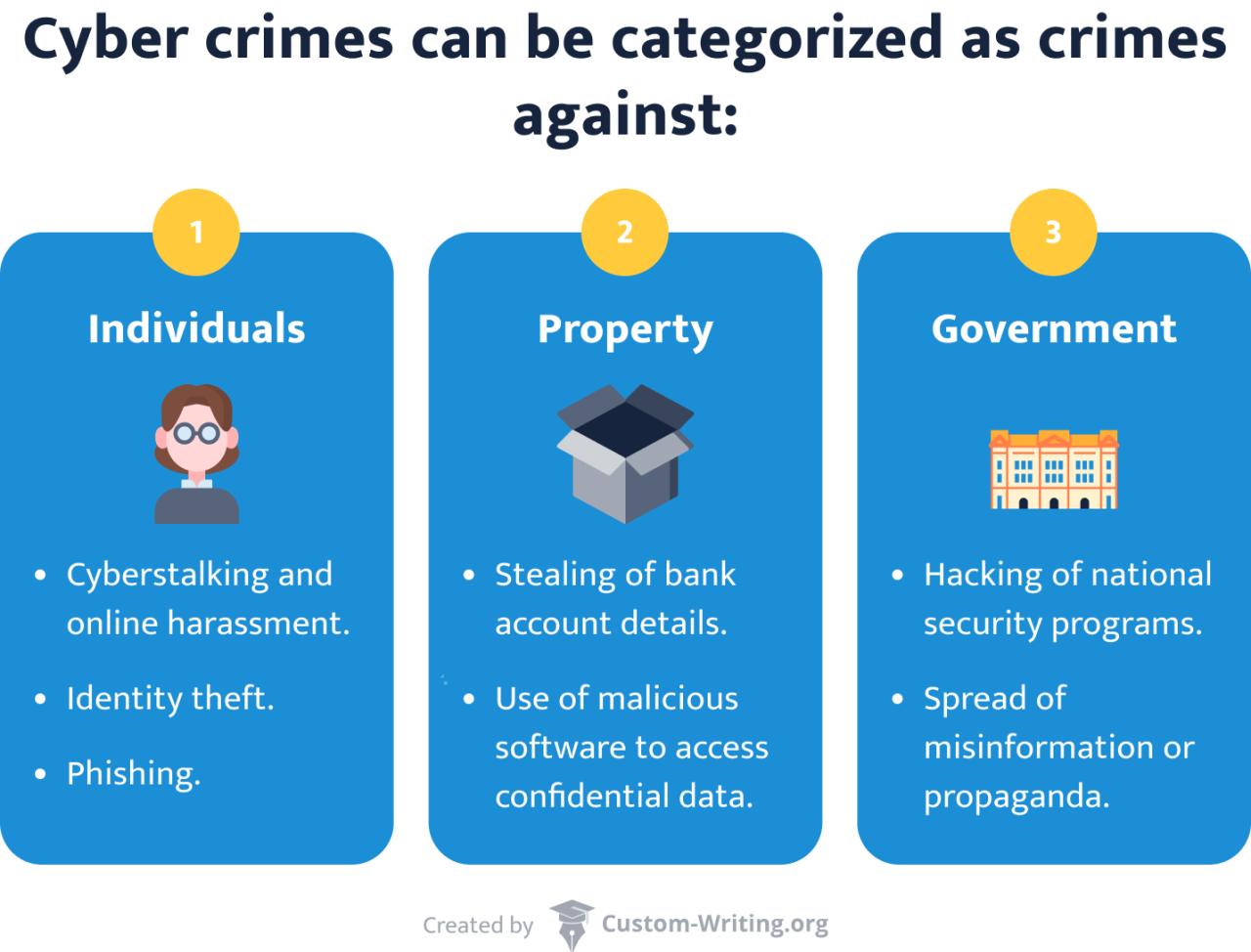
Ethical hacking and penetration testing are crucial aspects of cybersecurity. They involve simulating real-world cyberattacks to identify vulnerabilities in systems and networks before malicious actors can exploit them. This proactive approach allows organizations to strengthen their security posture and prevent data breaches or other damaging incidents.Ethical hacking differs significantly from malicious hacking in its intent and legality. Ethical hackers work with the explicit permission of the system owner and adhere to a strict code of ethics.
Their goal is to improve security, not to cause harm. Penetration testing, a subset of ethical hacking, is a systematic process of testing security controls to identify weaknesses.
Legal and Ethical Considerations in Penetration Testing
Penetration testing operates within a defined legal and ethical framework. It’s crucial to obtain written authorization from the system owner before commencing any testing activities. This authorization typically Artikels the scope of the test, the permitted targets, and the acceptable methods. Testers must also adhere to all applicable laws and regulations, including data privacy laws, and avoid any actions that could cause damage or disruption to the system beyond what is explicitly authorized.
Furthermore, ethical considerations extend to respecting the privacy of individuals and ensuring that no sensitive data is accessed or compromised unnecessarily. A clear understanding of these boundaries is paramount.
Examples of Tools Used in Ethical Hacking
Ethical hackers utilize a variety of tools to assess system vulnerabilities. These tools are categorized broadly into network scanners, vulnerability scanners, and exploitation frameworks. Network scanners are used to identify active devices and open ports on a network. Vulnerability scanners automatically check for known weaknesses in software and configurations. Exploitation frameworks assist in testing the impact of identified vulnerabilities, simulating real-world attacks in a controlled environment.
The selection and use of these tools are governed by the scope of the penetration test and the authorization provided.
Importance of Obtaining Proper Authorization
Unauthorized penetration testing is illegal and unethical. It constitutes a criminal offense and can result in severe legal consequences, including significant fines and imprisonment. Obtaining proper authorization is not merely a formality; it’s a fundamental requirement that protects both the tester and the system owner. A legally sound agreement ensures that the testing is conducted within defined boundaries, minimizing risks and ensuring that the activities are considered legitimate security assessments rather than malicious attacks.
This authorization should be documented thoroughly and explicitly state the permitted actions and the expected outcomes.
Final Summary
So, there you have it – a whirlwind tour through the fundamentals of cybersecurity research! While this is just a starting point, I hope this overview has ignited your curiosity and provided a solid base for further exploration. Remember, cybersecurity is a constantly evolving field, so staying informed and practicing safe online habits are key. Keep learning, keep asking questions, and keep yourself safe online!
Top FAQs
What are some good resources for beginners in cybersecurity research?
Cybrary, SANS Institute, and OWASP offer excellent free and paid resources. Look for introductory courses and tutorials tailored to beginners.
How much math is involved in cybersecurity?
The amount of math depends on the area of cybersecurity. While basic algebra and logic are helpful, advanced mathematical concepts are primarily needed for cryptography and specialized areas.
Is cybersecurity research a good career path?
Absolutely! The demand for cybersecurity professionals is high and continues to grow, offering diverse career paths and excellent job prospects.
What’s the difference between cybersecurity and computer science?
Computer science is broader, focusing on the design and development of computer systems. Cybersecurity is a specialized area within computer science that focuses on protecting those systems and data.


